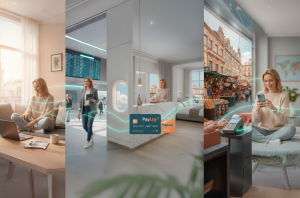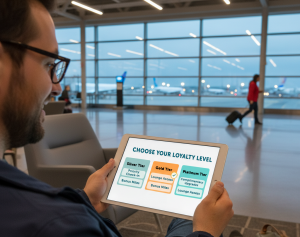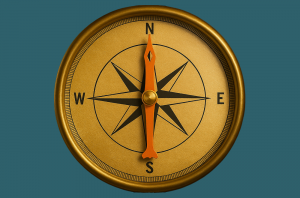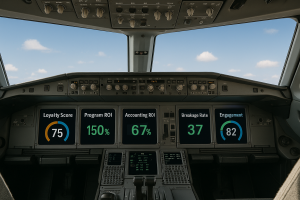Despite the rise of low-cost carriers and fare comparison tools, well-designed loyalty programs remain a crucial differentiator. Today’s travelers want more than cheap fares – they value recognition, perks, and memorable experiences. Airlines that invest in loyalty cultivate stronger retention, higher revenue, and deeper engagement, while travelers feel appreciated and rewarded.
Core Elements of a Successful Program
Personalization at the Center
Personalization is no longer optional. It’s the foundation of modern loyalty programs. Today’s travelers expect every interaction with an airline to reflect their unique preferences and behaviors. The strongest programs use data intelligently, leveraging booking history, travel patterns, and customer feedback to craft experiences that feel relevant and valued.
- Tailored rewards: Instead of generic perks, programs offer options like bonus miles, lounge passes, or upgrades based on individual travel habits.
- Dynamic offers: Algorithms adjust promotions in real time, rewarding frequent flyers with mileage accelerators or offering leisure travelers vacation discounts.
- Contextual recognition: Personalized messages, timely reminders, and even in-journey offers (such as seat upgrades or Wi-Fi deals) enhance the travel experience and make members feel seen.
- Segmentation beyond status tiers: Programs now create micro-segments, business commuters, family vacationers, or infrequent travelers and deliver relevant benefits to each.
The goal is to make each member feel recognized as more than a number, building an emotional connection that drives long-term loyalty.
Clear Value and Transparency
Simplicity fosters trust. Travelers should clearly understand how to earn rewards, move between tiers, and unlock benefits. Straightforward rules and transparent communication help avoid confusion and boost satisfaction.
Diverse and Relevant Rewards
While miles and upgrades remain foundational, top-tier programs now offer:
- Flexible points and upgrade certificates
- Cross-industry partnerships: hotels, car rental, retail, even mobility
- Lifestyle perks: Wi-Fi, extra baggage options, exclusive events, status gifting
A balanced portfolio that mixes practical and aspirational rewards keeps members motivated.
Agility in Program Design
The most successful airline programs operate with agility – adaptable, modular, and responsive to changing traveler needs.
- They offer real-time updates to rewards and tiers based on dynamic behavior.
- They support rapid deployment of seasonal promotions or partner offers without lengthy technical rebuilds.
- They manage surges in demand like peak-season redemptions, securely and efficiently.
This flexibility enables airlines to stay relevant, drive engagement at critical moments, and differentiate themselves.
The Importance of Automated Processes
Automation is a critical enabler of modern loyalty programs. From enrollment and tier tracking to points accrual, reward issuance, and member communications, automated processes reduce manual work, speed up execution, and minimize errors. Automation also allows programs to scale, handling millions of transactions and interactions without delays or inconsistencies. For travelers, this means faster recognition and seamless experiences; for airlines, it translates to lower operational costs, better compliance, and more accurate data to inform strategy. Automation ensures that the program runs smoothly behind the scenes, allowing teams to focus on innovation and customer engagement.
Data-Driven Engagement
By analyzing customer behavior, airlines tailor campaigns to anticipate churn, reward high-value segments, and drive redemption with timely, personalized offers. Intelligent segmentation fosters stronger revenue and satisfaction.
Best Practices in Action
The strongest loyalty programs share several traits: agility, adaptability, and customer focus. Here are some examples that highlight how leading airlines and travel brands have applied these principles:
- Miles & More (Lufthansa Group): One of the largest programs worldwide, offering tiered benefits, co-branded credit cards, and extensive partner networks. The program’s ability to integrate new partners and deliver relevant benefits keeps members engaged.
- Alaska Mileage Plan: Praised for its generous earning potential and unique partner mix, including non-alliance carriers. Its milestone rewards, bonus miles, and upgrade certificates create strong loyalty across both business and leisure segments.
- Delta SkyMiles: Known for its Medallion Choice Benefits, the program offers flexible rewards like upgrades, bonus miles, and gifting options. Frequent updates and data-driven engagement strategies ensure relevance and member satisfaction.
- United MileagePlus: Offers flexibility through PlusPoints, allowing members to choose how to redeem for upgrades and perks. A strong digital interface and extensive partner ecosystem enhance usability and perceived value.
- China Southern Sky Pearl Club: Leveraging agile program design, it tailors benefits to different traveler types and seamlessly integrates with partner airlines, demonstrating how scale and personalization can work together.
- Deutsche Bahn’s BahnBonus: Though outside the airline sector, its adaptable program shows how loyalty software can be applied across industries. Scalable benefits and targeted campaigns illustrate versatility and operational excellence.
- PAYBACK Coalition Programs: Known for serving millions of customers across industries, these programs emphasize data-driven insights, seamless partner integration, and advanced personalization – qualities that translate well to airline contexts.
These programs demonstrate that success often stems from a blend of strategic partnerships, personalized offers, flexible redemption, and robust back-end systems. Each has shown the ability to evolve quickly, maintain operational stability, and consistently deliver value to travelers.
Want to see how these best practices translate into real-world success? Explore our references to gain deeper insights into loyalty innovation and execution.
Challenges to Consider
Building such programs presents challenges:
- Complexity vs. Simplicity: Too many rules or options can overwhelm members and reduce program clarity.
- Financial Sustainability: Balancing aspirational rewards with cost-effective liability management is critical.
- Operational Integration: Embedding loyalty across all touchpoints – from booking to inflight requires adaptable systems and well-trained staff.
- Technology Dependence: Programs must rely on reliable platforms capable of scaling and supporting real-time updates. Any system downtime or data issue can harm member trust.
- Data Privacy and Compliance: Collecting and using traveler data must align with privacy regulations and best practices. Mishandling data can lead to reputational and legal risks.
- Competitive Pressures: As more airlines enhance loyalty offerings, standing out requires constant innovation and frequent refreshes of the program design.
- Member Fatigue: Overly complex or aggressive engagement strategies can overwhelm members, leading to reduced participation and disengagement.
Conclusion
An airline loyalty program that blends personalization, clarity, agile design, and strategic execution becomes more than a marketing tool – it becomes a strategic growth engine. The most successful programs stand out by addressing evolving customer needs, operating with flexibility, and managing engagement sustainably. In an age of endless travel choices, a well-designed loyalty experience makes travelers return – not just for a flight in the skies but for the thoughtful experience surrounding it.
Airlines ready to evolve their loyalty strategy can achieve it faster with our trusted platform LPS FLITE: scalable, automated, and built for personalization. Let’s design the growth engine your travelers deserve. Learn more about LPS FLITE.






